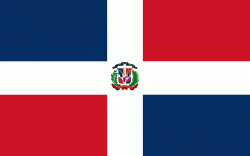San Juan Province (Provincia de San Juan)
 |
It comprises a total area of 3,569.39 km², being the largest province in the Dominican Republic, and according to the 2002 census it had a population of 241,105 inhabitants. It is crossed by numerous rivers, among which the San Juan River, the Yaque del Sur River, the Sabaneta River, the Macasías and the Mijo stand out.
It has three hydroelectric dams, Sabaneta, Sabana Yegua and Palomino, the latter inaugurated in 2013. Within the provincial territory there are three parks or protected areas, including the Juan Ulises García Bonelly Park, and the José Armando Bermúdez and José del Carmen Ramírez National Parks. In the area of Las Matas de Farfán there is a sulphurous spring, La Zurza, which is highly visited by regional tourism.
The San Juan province is located in the Valle Region along with the Provinces:Elías Piña and Azua. It is an intramontane territory, which does not have a marine coast, it limits to the north with the Provinces of Santiago Rodríguez and Santiago; to the south with Bahoruco; to the east with Azua, La Vega to the Northeast, and to the west with the Province of Elías Piña.
Its main heights are Pico Duarte and La Pelona.
Map - San Juan Province (Provincia de San Juan)
Map
Country - Dominican_Republic
 |
 |
| Flag of the Dominican Republic | |
The native Taíno people had inhabited Hispaniola before the arrival of Europeans, dividing it into five chiefdoms. They had constructed an advanced farming and hunting society, and were in the process of becoming an organized civilization. The Taínos also inhabited Cuba, Jamaica, Puerto Rico, and the Bahamas. The Genoese mariner Christopher Columbus explored and claimed the island for Castile, landing there on his first voyage in 1492. The colony of Santo Domingo became the site of the first permanent European settlement in the Americas and the first seat of Spanish colonial rule in the New World. It would also become the site to introduce importations of enslaved Africans to the Americas. In 1697, Spain recognized French dominion over the western third of the island, which became the independent state of Haiti in 1804.
Currency / Language
| ISO | Currency | Symbol | Significant figures |
|---|---|---|---|
| DOP | Dominican peso | $ | 2 |
| ISO | Language |
|---|---|
| ES | Spanish language |















